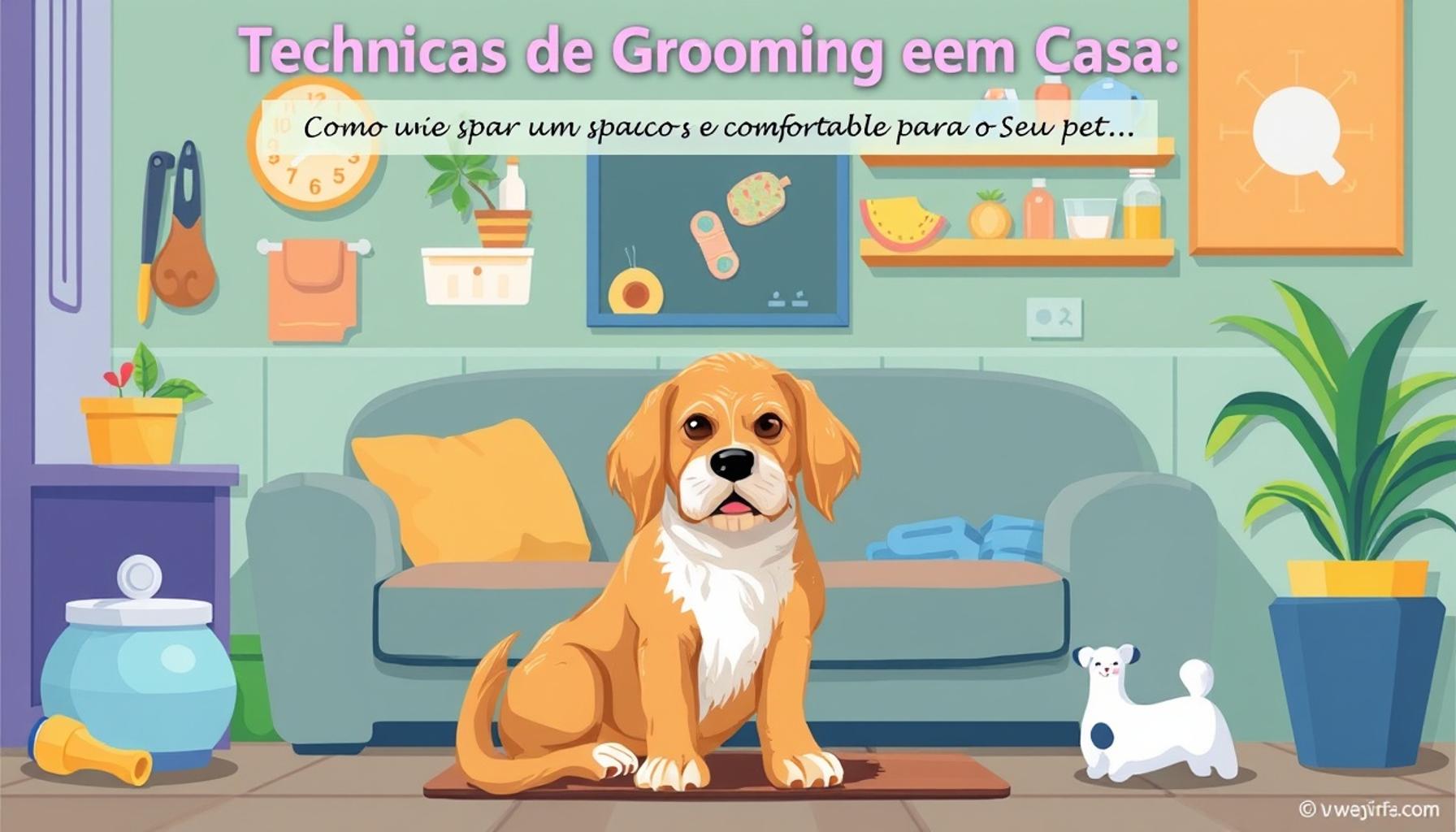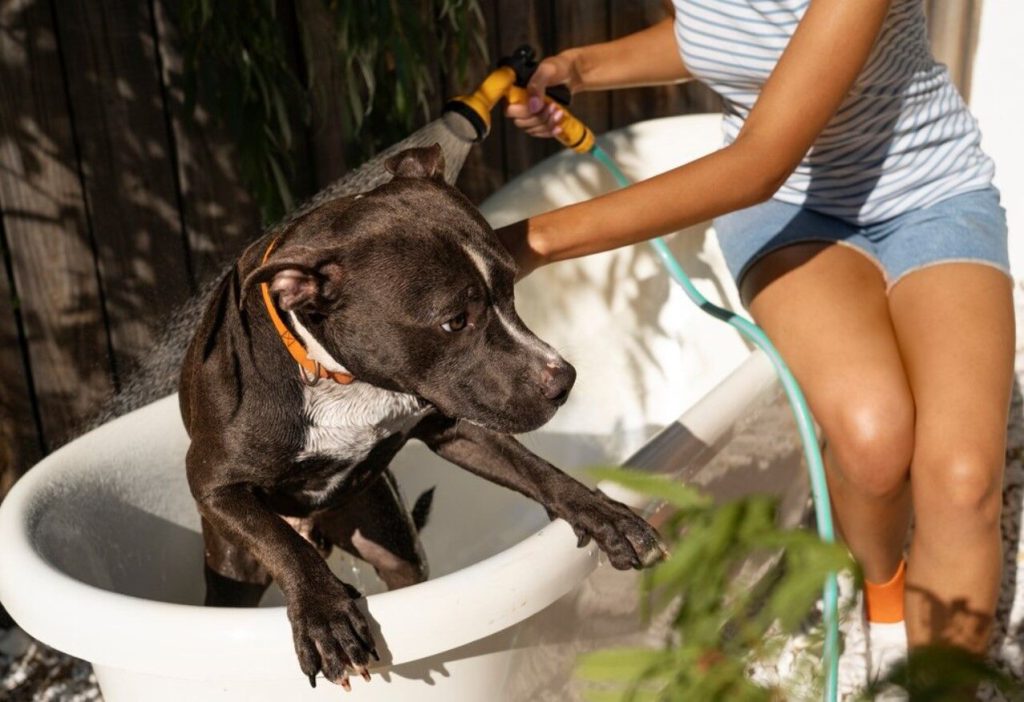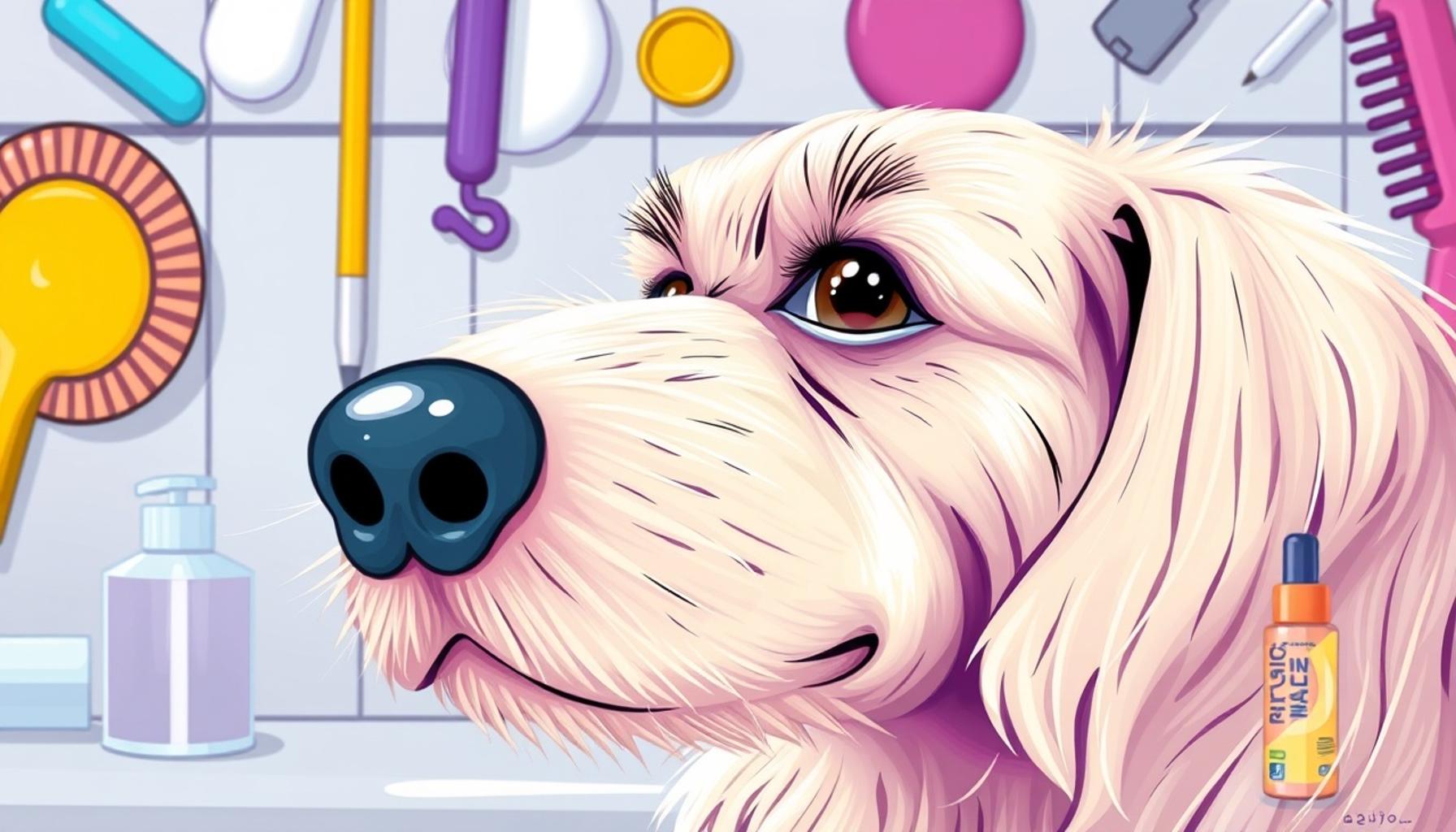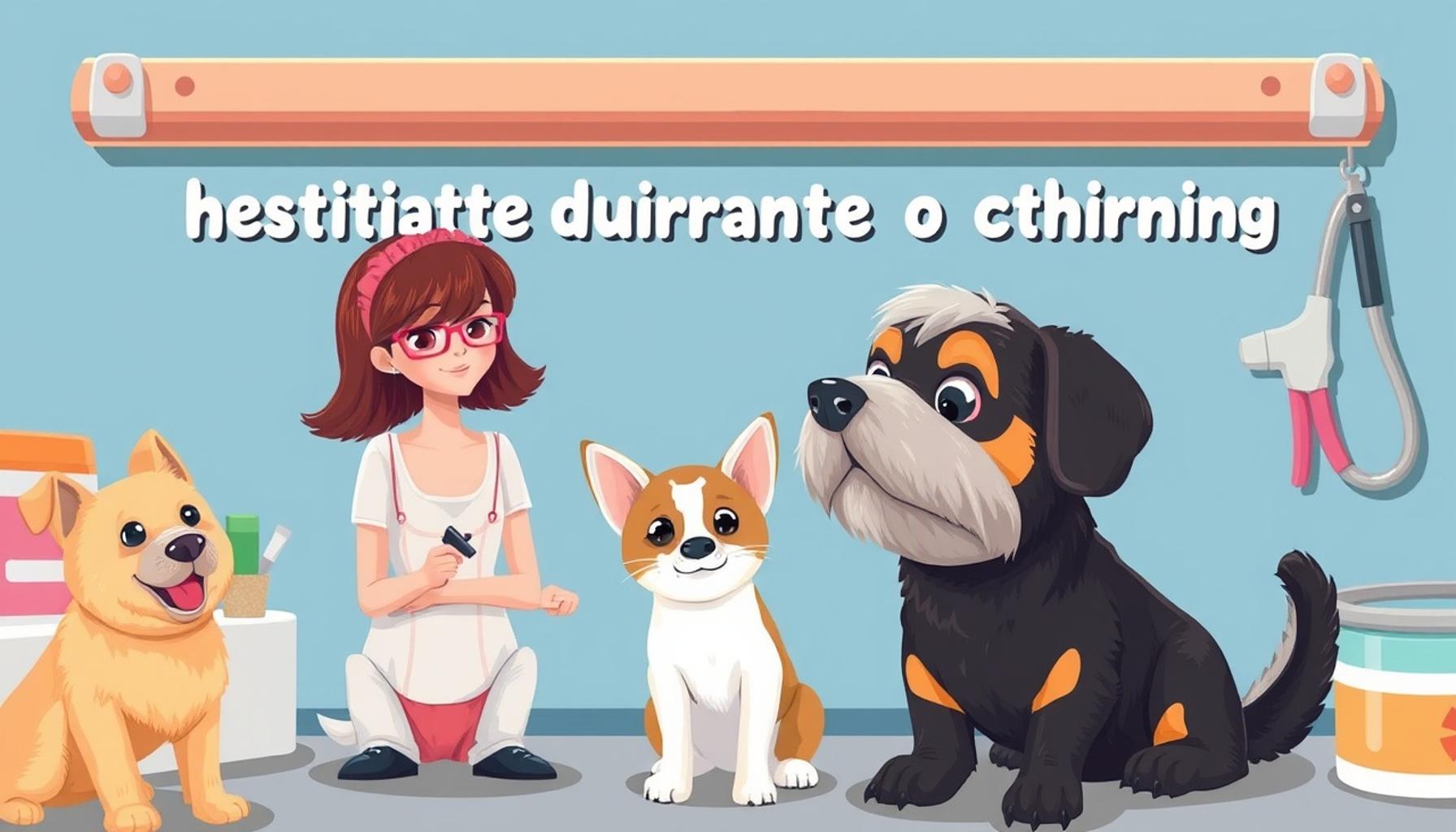Home Grooming Tips Creating a Safe Cozy Space for Your Pet

The bond between pets and their owners often flourishes in the little moments spent together, and home grooming can be one of those special experiences. Not only does grooming enhance your pet’s appearance, but it also plays a crucial role in their health and well-being. Creating a dedicated space that is both safe and comfortable for this activity can transform grooming from a chore into an enjoyable ritual.
Setting up a proper grooming area at home is important for several reasons:
- Safety: A controlled environment reduces the risk of accidents and injuries.
- Comfort: Your pet is more likely to relax if they feel secure and cozy.
- Convenience: Grooming tools and supplies are easily accessible, making the process smoother.
In this article, we will explore the essential techniques to create that perfect grooming corner, along with a ranking of the Top 5 products you’ll need for effective home grooming. Each selection is curated to help you and your furry friend enjoy this bonding experience to the fullest.
ADDITIONAL INSIGHTS: Expand your understanding here
Top 5 Grooming Techniques at Home: Creating a Safe and Comfortable Space for Your Pet
Grooming is not merely about maintaining your pet’s appearance; it contributes significantly to their overall well-being. Regular grooming helps prevent health issues, improves the bond between pets and their owners, and can be therapeutic for both. While professional grooming services are available, managing grooming at home is not only cost-effective but also provides a wonderful opportunity to strengthen the bond with your pet. However, many pet owners find this task daunting. The key is to be well-prepared and knowledgeable about the best practices and setting up a conducive environment for grooming. Here are five essential techniques to help you and your pet enjoy grooming sessions right in the comfort of your home.

5. Invest in the Right Grooming Tools
The foundation of any successful grooming session begins with having the right tools. Quality equipment ensures not only efficacy but also comfort and safety for your pet. Here’s a more in-depth look at essential grooming tools:
- Brushes and Combs: Selecting the right type of brush can vary based on your pet’s breed and coat. Long-haired pets, such as Golden Retrievers or Persians, do well with slicker brushes to prevent mats, while short-haired breeds like Beagles require bristle brushes for removing loose hair.
- Nail Clippers: Trimming your pet’s nails is crucial to prevent overgrowth and related health issues, like splayed feet or injuries. You can choose between scissor-style clippers or a nail grinder for smoother edges and reduced splintering.
- Shampoo and Conditioners: Always select pet-safe shampoos and conditioners specifically tailored for your pet’s coat type and skin sensitivity. Hypoallergenic shampoos are preferable for pets prone to allergies and skin issues.
- Additional Tools: Consider using ear-cleaning solutions and grooming wipes to maintain hygiene.
Investing in these tools not only facilitates the grooming process but also minimizes the risks of injury and stress, transforming grooming into a pleasurable routine for your pet.
4. Designate a Specific Grooming Space
Establishing a specific grooming area in your home plays a pivotal role in your pet’s comfort. A designated space denotes predictability, which can be reassuring for your pet. Here’s how you can set up your grooming area:
- Safety: The space should be free of sharp edges and objects that might pose a risk. Secure any electrical outlets and avoid slippery surfaces.
- Comfort: Opt for a place with a non-slip mat that gives your pet a sense of security during the grooming process.
- Lighting: Proper lighting is vital for spotting any skin issues or matting in the fur. A well-lit area helps achieve thorough grooming.
- Convenience: Ensure the area is equipped with storage for all tools, towels, and cleaning essentials, making it easier to clean up post-grooming.
A dedicated space facilitates a structured routine, transitioning grooming from a potentially chaotic event into a manageable and even enjoyable activity.
3. Establish a Routine
Grooming routines are not just beneficial for consistency and regularity; they also enhance trust and cooperation between you and your pet. Here’s how to craft an effective grooming routine:
- Frequency: Customize the frequency of grooming to suit the specific needs of your pet. For instance, breeds like Poodles might require more frequent grooming than a Boxer.
- Duration: Initiate grooming with shorter durations, gradually lengthening as your pet becomes more accustomed to the process. The aim is to make grooming a part of their regular activities.
- Positive Reinforcement: Utilize treats, affection, and praise to reward your pet, associating grooming with positive experiences.
Building a routine not only reduces resistance from your pet but also establishes a harmonious connection during grooming sessions, paving the way for a stress-free future.
2. Create a Calm Environment
A serene environment is crucial in ensuring a stress-free grooming experience. Pets can become anxious if they sense tension or abrupt changes in their environment. Consider the following to maintain calm:
- Sound: Background music with soothing tones can relax your pet. Tracks specifically designed for pets can be particularly effective.
- Temperature: Maintain a comfortable temperature in the grooming area. A neutral temperature prevents discomfort or stress associated with extreme temperatures.
- Familiar Items: Incorporating familiar items like toys or blankets, imbued with your pet’s scent, can provide additional comfort.
A strategically calm environment significantly reduces anxiety, enhancing receptiveness and cooperation during grooming, thus making it a rewarding engagement for both you and your pet.
1. Focus on Gentle Techniques
Gentle grooming techniques significantly elevate the experience for your pet, ensuring it remains pleasant and devoid of fear. Here’s how you can focus on a gentle approach:
- Slow Movements: Approach your pet slowly and with intent. Sudden movements can startle pets, leading to distrust and increased anxiety.
- Be Mindful: Attune yourself to your pet’s cues. Understanding their body language can help identify when they are uncomfortable and need a break.
- Gentle Products: Opt for mild, pH-balanced products that are less likely to cause irritation or discomfort, ensuring a gentle cleanse.
- Communication: Talk to your pet in a calm, reassuring voice throughout the grooming process to provide comfort and security.
Employing these gentle techniques transforms grooming into a nurturing experience, allowing pets to relax and enjoy being pampered, resulting in a stronger bond between you and your furry friend.
Mastering the art of home grooming is a commitment to your pet’s health and happiness. Each pet is unique, requiring different approaches and tools. By thoughtfully investing time and care in the grooming process, pet owners can ensure their furry companions remain healthy, happy, and stress-free, all while enhancing the irreplaceable connection shared between them.
| Category | Details |
|---|---|
| Safety Measures | Implement non-slip mats and secure any electrical cords to minimize hazards while grooming your pet. Keeping sharp tools out of reach is also crucial. |
| Comfort Elements | Introduce soft surfaces and familiar scents into the grooming area to create a comforting environment that reduces anxiety in pets during grooming. |
| Grooming Tools | Choose tools that suit your pet’s coat type, such as soft brushes for sensitive skin and professional-grade clippers for efficiency, ensuring a pleasant experience for them. |
| Routine Establishment | Creating a consistent grooming schedule not only helps your pet know what to expect but also reinforces positive behavior over time, making the process smoother and enjoyable. |
When creating a home grooming space for your pet, the emphasis should be placed on a tranquil and functional setup. By implementing appropriate safety measures, you are not only protecting your furry friend but also ensuring that you can focus on the grooming process without constant distractions or concerns. Your choice of tools reflects your commitment to your pet’s wellbeing; hence selecting ergonomic and pet-friendly grooming tools can significantly enhance the experience.Furthermore, setting a routine for grooming can lead to better compliance from your pet through familiarization. As with humans, pets thrive on predictability. Regular sessions can help reduce their stress and anxiety over time. Incorporating rewards or positive reinforcement during this process will create a positive association with grooming.Ultimately, the goal of grooming at home should be to nurture not just the physical appearance of your pet but also their mental stability. A safe and comfortable space will contribute significantly to their overall happiness. Therefore, maintaining this environment should be an ongoing priority, ensuring that both you and your pet look forward to grooming time as a bonding opportunity.
ADDITIONAL INSIGHTS: Expand your understanding here
Frequently Asked Questions about Home Grooming Techniques
What are the essential tools for grooming my pet at home?
Grooming your pet at home requires some basic tools to ensure a smooth and safe experience. Essentials include a good quality brush suited to your pet’s coat type, a comb for detangling, nail clippers for trimming your pet’s claws, and pet-specific shampoo for bathing. Additionally, consider investing in a set of grooming scissors for trimming fur and ear-cleaning solutions to maintain their hygiene.
How can I make my pet comfortable during a grooming session?
Creating a calm and stress-free environment is crucial for successful grooming at home. Start by choosing a quiet space where your pet feels relaxed and comfortable. Consider playing soft music or offering your pet treats to make the experience more enjoyable. Introducing grooming tools slowly can also help your pet adapt without feeling threatened. Regular grooming sessions can familiarize your pet with the routine, reducing anxiety over time.
How often should I groom my pet?
The frequency of grooming depends significantly on the type of pet and its breed. Generally, long-haired pets may require grooming on a weekly basis to prevent matting and tangles. Short-haired breeds can typically be groomed every few weeks. Regular brushing, nail trimming, and ear cleaning are essential parts of any grooming routine to maintain your pet’s overall health and hygiene. Additionally, seasonal changes may require more frequent grooming to manage shedding.
Are there common mistakes to avoid while grooming at home?
Yes, there are several common pitfalls to be mindful of when grooming your pet at home. One of the most frequent mistakes is using human grooming products which are not formulated for animals and can cause skin irritation. Another common issue is trimming fur or nails too short, which can hurt your pet. Always use purpose-built pet grooming tools, and if you’re uncertain, seek advice from a professional groomer or your veterinarian before starting.
SEE ALSO: Click here to read another article
Conclusion
Creating a safe and comfortable grooming environment for your pet at home is not only an essential responsibility but also a rewarding experience that strengthens the bond between you and your furry companion. As emphasized throughout this article, establishing a space that caters to your pet’s specific needs requires attention to detail, patience, and the right resources.
A key takeaway is the importance of selecting the proper tools and products tailored to your pet’s breed and coat type. Whether it’s the right brush for your cat’s short hair or a specialized shampoo for your dog’s sensitive skin, having the appropriate grooming kit is crucial for effective grooming sessions.
Moreover, understanding your pet’s behavior and emotional cues contributes significantly to a positive grooming experience. Your awareness of their stress signals, coupled with gentle handling, ensures that the grooming process remains stress-free and enjoyable for your pet.
Establishing a routine that revolves around consistency and positive reinforcement is another pillar in creating a harmonious grooming environment. Regularly scheduled grooming sessions, coupled with praise and treats, not only keep your pet looking their best but also help in building their trust and cooperation.
Lastly, the organization and cleanliness of your grooming space cannot be overstated. A well-organized area, devoid of clutter, creates a calm and efficient environment, making the grooming process smoother for both you and your pet.
Ultimately, by incorporating these techniques and creating a customized grooming space, you provide a foundation for a healthy and happy life for your pet. As pet owners, continued learning and adaptability are vital. Investigating further into grooming practices enriches our understanding, enabling us to offer the best care possible to our beloved pets.


